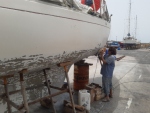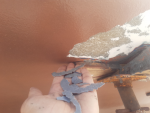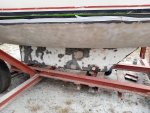kko
Member
Hello,
this year we wanted to make the hull renovation which should last "years". But it failed just when we have removed the masking tape. Our boat is polyester Albin Vega. We have sanded all previous paint layers to the original gelcoat. The Gelcoat was thin, so 70% was actually sanded down to the fiberglass. The hull was washed with karcher afterwards. We have painted one layer of unthickened West System epoxy, next 6 layers of the West System epoxy with the Barrier Coat additive. Afterwards, everything was sanded, washed and the Coppercoat was applied. Over a month of hard work and lot of money...
And when we have removed the masking tape, we have found that there is completly no athesion. We can peel the coat with bare hands down to the old gelcoat or laminate (no difference in adhesion). The epoxy cured perfectly, there were no signs of surface contamination, sanding dust was washed, hull was dried 10 months in the Canaries sun. Any hints?
Best regards.
this year we wanted to make the hull renovation which should last "years". But it failed just when we have removed the masking tape. Our boat is polyester Albin Vega. We have sanded all previous paint layers to the original gelcoat. The Gelcoat was thin, so 70% was actually sanded down to the fiberglass. The hull was washed with karcher afterwards. We have painted one layer of unthickened West System epoxy, next 6 layers of the West System epoxy with the Barrier Coat additive. Afterwards, everything was sanded, washed and the Coppercoat was applied. Over a month of hard work and lot of money...
And when we have removed the masking tape, we have found that there is completly no athesion. We can peel the coat with bare hands down to the old gelcoat or laminate (no difference in adhesion). The epoxy cured perfectly, there were no signs of surface contamination, sanding dust was washed, hull was dried 10 months in the Canaries sun. Any hints?
Best regards.








